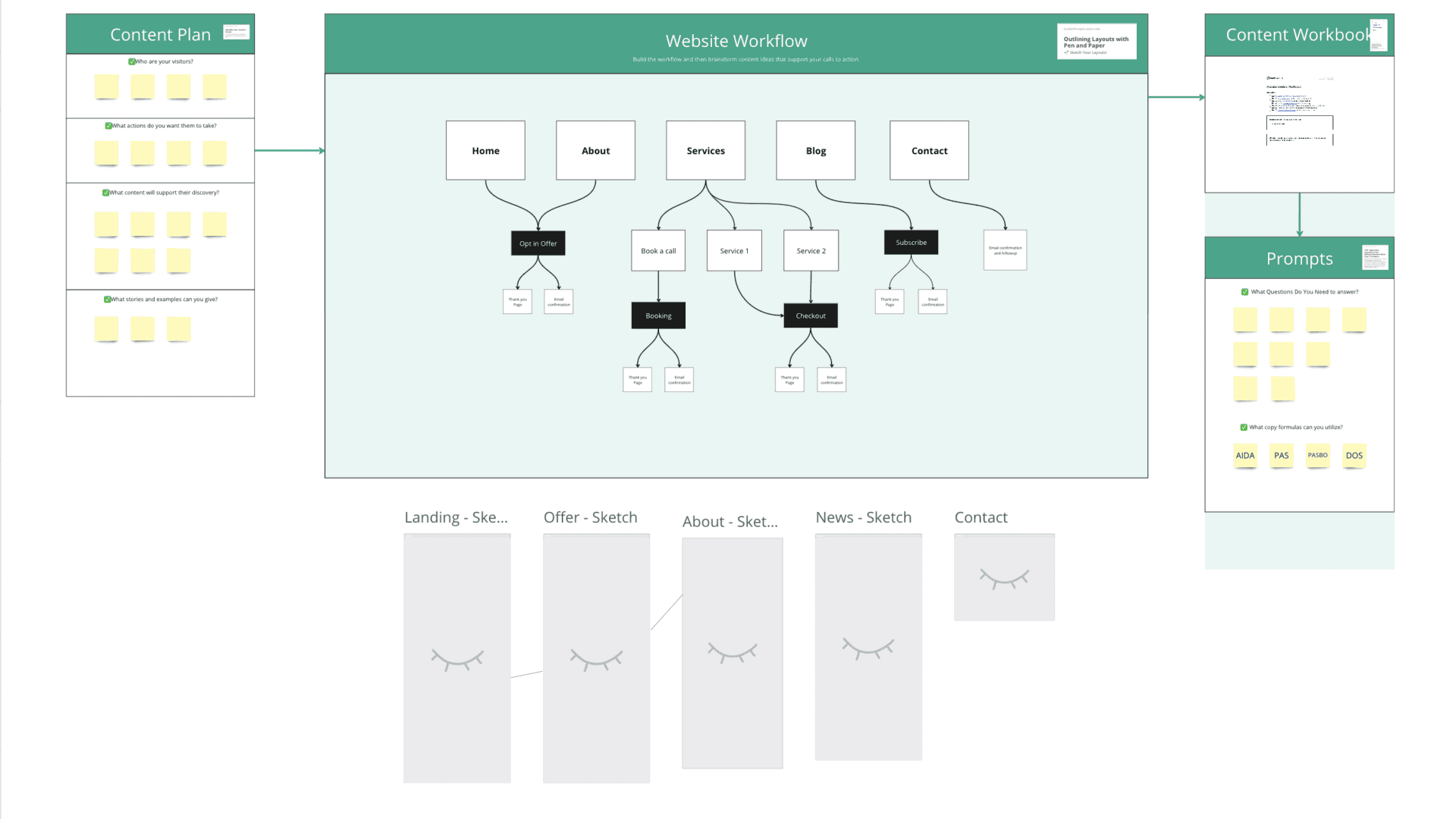When small business owners think about websites, they usually focus on the design. After all, when they’re creating a website, they begin by thinking about a visual layout that helps visitors reach their goals.
However, websites are much more complicated than the designs and the content you put on them. Sites must serve a purpose, and accomplishing that means putting more into them than the layout and graphics.
How Creators Often View a Website
Creators often think of their website in terms of what it looks like instead of what it does. They take a very literal approach to their website and focus on the graphics and layout.
When first creating your website, this type of approach is okay to take. However, you aren’t going to provide any value to your audience by only focusing on the structure. There’s more to your website than the layout and elements you use.
There are three significant elements creators focus on when thinking about their website. Design, portfolio, and content. Focusing on these elements in a vacuum can lead to creating sites that don’t serve a purpose, which in turn can make it hard for your website to resonate with your audience.
Design
The design of a website helps audiences know how to interact with it. Bad design pushes people away, while good design helps people intuitively figure out how to navigate a website to meet their needs.
Design can also be thought of in terms of layout. How are you structuring the visuals and copy on your website? What frame are you using to structure everything?
Design includes both web design and graphic design. Current web technology has made it so that you can create a site without having to learn code. However, knowing good design principles is essential in building your website. They can help you communicate the value you have to offer to your audience right from the start instead of having to build up to it.
Portfolio
Creators often also look at their website as a way to display their work. Some of them treat it like a home for the best pieces that they can send out to potential clients. While this may be true, some creators don’t look at their portfolio as a way to show what they can do for the client. Instead, they look at it as a way to show off their accomplishments.
In some cases, the two may not be completely different. However, the intention used to create these pieces often comes across in the finished product. Potential clients don’t care about what you’ve done if it isn’t framed in a way that provides value to them. They want to know how you can help them.
Your portfolio is another way for you to show your audience how you can meet their needs. It shouldn’t read as boasting about your accomplishments. Instead, it should show them how you’ve helped other people like them address similar pain points.

Content
Where design is the layout, content is the stuff that fills in that frame. Think of it like design is the frame of the house, while content is the furniture within that house.
Content is a tricky beast. On the one hand, your audience absolutely comes to your website for your content. However, creating that content can be tricky. If you don’t approach it in the right way, your website will just be a pretty house to look at instead of a home to live in.
Sometimes, people who create their websites look at content as just a pretty thing to look at instead of something that serves a purpose. It can absolutely be both, but having something pretty without having a purpose usually won’t resonate with your audience.
How Your Audience Views Your Website
Your audience views your website in almost the opposite way of you and other creators.
Sure, the design and content are important. It influences how your audience thinks about your website. But they’re focused on what your website accomplishes instead of just the design elements that go into it.
They’re going to look at your website differently than you, and other creators do. Knowing how they look at your website can help you create something that will grab their attention and keep them coming back for more.
Your audience wants to know what they can get out of your website. What will it give them? How will it help them with the problems they have? What can they get out of using your site?
Many of them view your website as a statement of who you are, what your business does, and what it can do for them. They go to your website to see if your services offered and values held matches what they believe or what they need from you.
Ultimately, your website helps them come to a decision on if they should use your services or products or go somewhere else.
How to Connect These Views
There’s no reason you can’t look at your website from both points of view. What do the design and content help your audience achieve? How can you frame your design and content in a way that meets your readers’ needs?
Always ask yourself what each step will do for visitors while you are creating your website. Otherwise, you might make design choices that don’t help communicate your bottom line.
After you’ve built your website, give it some space. Getting too close to a website makes it harder to spot problems. Your audience will come into your site with no context. You want to make sure you aren’t relying on the context you have as a business owner to navigate your way through your website. Take a few days away from your site before you make any edits or changes.
After you’ve given it some space, come back to your website and look at it with the lens of your target audience. Relying on just the site, what does it tell you about your business? Is it communicating any messages you don’t like? Is there anything missing that really ought to be there?
Looking at your website in this way will help you see what’s missing and what needs to change. It’ll also help you create a website that provides value instead of one that simply has an attractive design.
I believe that good design starts with the question, “what value do I provide to my audience, and how can I communicate that?” When you start designing your website with this question, you make different decisions about what you are doing and why you are doing it.
Keep asking this question throughout the entire site creation process. Ask it until you’re sure you’ve communicated the value you have to offer and then ask it a few more times to be safe. Being completely clear about the value you have to give to the world will do more for creating a successful website than obsessing over fonts and color schemes.
Design is a tool. It’s not the reason you decided to create a website. Getting caught up on the design to the point of forgetting why you chose to make a site in the first place can cause you to get hung up on things that don’t matter.

Leave a Reply